Arguably the most influential man in the 40K universe, the most powerful mortal psyker, the eldest member of the eldest race, a schemer and planner without peer… and a real dick. Eldrad Ulthran: the man, the myth, the legend. Click to read the CA2018-updated article, or check out the Tactics Corner for more reviews and strategies.
Overview
Eldrad Ulthran is the Eldar’s pinnacle psyker, the prophet of Ulthwe. Armed with some of the most potent relics of his race and the most hackneyed plot contrivances Games Workshop can muster, he does what has to be done to ensure the survival of his people and is Always Right About Everything. Seriously, though the dude is one of the strongest Farseers in the galaxy and stands with some of the best psykers in the game; if a regular Farseer doesn’t cut it, Eldrad has the extra oomph you may need.
Eldrad’s statline is pretty similar to that of the basic Farseer; he has mostly the same characteristics, but with notable bumps in a couple places. The usual set of numbers (movement 7″, strength 3, leadership 9, two attacks, weapon/ballistic skill 2+) make up the majority of his stats, but he is significantly harder to kill, coming with a sixth wound and an extra point in toughness, not to mention his 3+ invulnerable save. For only 25pts more than a basic Farseer (135 total), that is a very reasonable asking price for a named character.
Special Rules and Wargear
Eldrad is surprisingly simple for a named character- although that’s not to say that he doesn’t have a fair pile of rules to his name, just that most of them are the ones native to every Farseer. Ancient Doom and Battle Focus do the same things for him they do for every Eldar; Runes of the Farseer and Ghosthelm give him the usual protections against bad psychic rolls and mortal wounds that are standard to the chassis. All of these are varying degrees of usefulness in general, but they are nothing particularly unique to Eldrad himself- rather, they should be considered part of the package. So what does the big man offer us in terms of upgrades over a basic Farseer?
Eldrad’s only actual unique rule is Spiritlink, which gives him +1 to cast his next spell each time he casts a spell successfully. Practically speaking, this means that you want to lead with a “test” spell when using him, in order to stack up bonuses to maximize your chances of getting off other spells. Combining it with the Seer Council stratagem can get you up to some pretty intense casting bonuses, if you really need to force through a power- or just want to make absolutely sure those high-warp charge spells from the Runes of Fate discipline go off successfully. It may not seem like a huge bonus, but +1 to casting is actually pretty strong in the scheme of things- only a handful of models in the game (Magnus, LoC, Malanthrope, a few others) actually get these bonuses and if you haven’t played against them it can be difficult to understand how much it shifts the math on things. In the most basic sense, though, it’s a 15% bonus to your chances to succeed the spells he’ll be casting most of the time and doubles your chances of getting off that big d6-damage Smite when you’re going for broke.
Eldrad also gains some bonuses to his psychic might in a more straightforward sense; he can manifest three spells per turn and knows three spells from the Fate discipline, both of which put him one notch above a standard Farseer. He “only” gets two Deny the Witch attempts, but this still puts him on par with the strongest casters in the game overall.
Eldar also comes with the Staff of Ulthamar, which is unique to him. Swinging at S5 AP-2 and d3 damage, it’s a reasonably solid weapon for beating up on opposing characters or MEQ squads; it might not wound on 2s like his basic Witchblade does (which you always have the option to use, of course), but the additional armor penetration is really nice in most cases and will significantly up the math on how much damage you’re dealing. On anything less than T5 you’re better off using the Staff, and against most T5 targets you’re still better off with the Staff; T6 and higher, though, you’ll want to swap over to the Witchblade so you have a chance of forcing those wounds through.
Uses
So why are you bringing Eldrad in the first place? What’s he good for? Well, in case it wasn’t obvious from the above, Eldrad is basically a Farseer++. Everything a basic Farseer does, Eldrad does a little bit better- he’s got a stronger melee attack, more spells, more casts, more bonuses, an extra wound, and a better invulnerable save. He’s just better than the standard guy, no real arguments.
However, there’s some caveats to that. He’s certainly better than a Farseer, but he does cost you some points and if you’re not making use of that third spell with him, he probably really isn’t that much more reliable than your basic dudes. Eldrad also lacks the mobility that a Farseer can access via a jetbike, and is prohibited from taking any relics (such as Faolchu’s Wing, which can give you a 12″ move for free.) This isn’t always a huge issue, since he’s hardly slow at Mv7″, but when you’re trying to keep up with a unit that is clocking it across the table it can be a significant detriment. It’s especially noticable with the offensive powers, such as Smite, Executioner, and Mind War, all of which can be very positioning-dependent and thus are less useful to Eldrad than to some other casters.
However, none of that is really the biggest strike against him. No, that honor goes to a much simpler factor on his datasheet, namely the Ulthwe keyword. If you’re bringing Uldrad to the party, he can only be part of an Ulthwe detachment (or a Ynnari one, but that is a digression that I won’t go into here, because it entails a totally different set of considerations.) As Alaitoc is vastly more powerful and more powerful, this will generally be a major limiter on how you can include him in an army. It doesn’t completely prevent you, of course- including a Supreme Command or similar detachment to bring Eldrad is certainly within the realm of possibility, and since characters don’t benefit as much from the Craftworld traits, but it does limit your ability to embark him on transports in many cases.
The main reason you will (or won’t) want Eldrad in an army is if you really need one of your spells to go off each turn. The Runes of Fate table has some extremely powerful spells on it and sometimes having or not having one of them can be gamebreaking; by the same token, sometimes your list is centered around a particular strategy that relies on one or more of the spells from the Eldar tables, and if that’s the case then the man of Ulthwe is your best bet for insuring that they go off each turn. But building a list around an unreliable element like that can be dangerous, and if you aren’t so heavily focused on getting those powers off (more regarding them as an additional bonus than a necessity), you may be better served by a standard Farseer that comes at a cheaper price and with more flexibility of options.
Countering
How do you stop a man like Eldrad? Well, as with most of the Eldar psykers, there are two basic ways: one, take out what he’s buffing or two, take out the man himself. Which of these is easier will depend a lot on your list and your opponent’s, but both are certainly possible.
If you’re gunning for Eldrad, all of the usual anti-character tools will do. Snipers, fast-moving units, and anything with Fly are great ways to get close and vaporize him; Eldar typically don’t have a lot of big units to hide characters inside of the way that some other armies do, so they rely more on clever positioning with multiple nearby squads to do the trick- but this means that if you are willing to dedicate firepower to getting rid of one or more of those units, you can really hurt them. Do remember that he comes with T4, 3++, and six wounds, though; he’s much harder to kill off than most psykers are and won’t go down easy. Often times, fast-moving “assassin” characters (or units) like the Solitaire, Jump Pack Captain, and such are better options for getting rid of him, especially if you can cause a wound or two with their shooting beforehand.
Alternatively, rather than jumping through all of those hoops, you can simply get rid of whatever units he is buffing; by himself, Eldrad is no threat at all, and even if you kill him off the units will remain to cause you headaches, so it can sometimes be the better option. This does play into the Eldar player’s hands, however, as Eldrad is often used to make units tougher (e.g. through Fortune) and thus getting rid of them may be a bit of a pain. Still, since Eldrad is typically found alongside Ulthwe units it is a much easier prospect to shoot or assault them away than it is for something like an Alaitoc army, and Eldar units in general tend not to be that hard to kill overall; throw enough Bolters or Lascannons into them and they will fold up pretty easily.
Anti-psychic tactics will also put a serious roadblock in the way of a player using Eldrad; stratagems such as those available to the World Eaters, Black Templars, Hive Fleet Kronos, and Sisters of Battle can shut down virtually any one power of your choosing and penalties to cast from various sources will also be a huge hindrance to him, since the Runes of Fate powers are very high casting thresholds to start with. Even just basic Deny the Witch rolls from psykers of your own can do some significant work and throw an Eldar army for a loop, so make sure you keep them pushed forward to a point where that 24″ bubble is relevant.
Final Thoughts
In this edition, Eldrad Ulthran lives up to his name as one of the most powerful psykers in the game, though by the same token he suffers from many of the issues that accompany Eldar characters in general. Used properly, he can be a tremendous force multiplier and make the entire rest of your army significantly more powerful; used poorly, he can be sniped out in short order and waste big chunk of points. Knowing what spells to cast with him and which units you need to target with them are key to getting his value back.
Remember, you can always order Games Workshop product at great discounts every day in the Frontline Gaming store, whether you’re looking to start a new army or fill out an existing one.

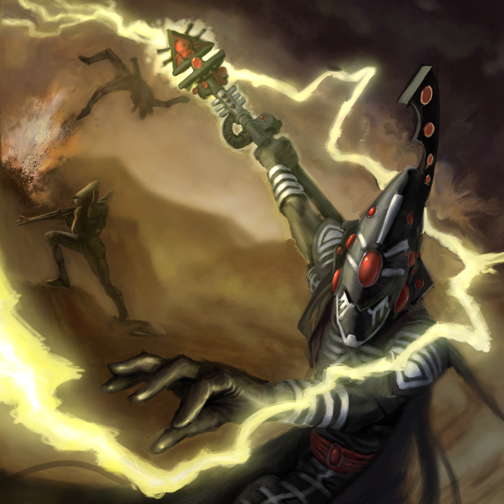
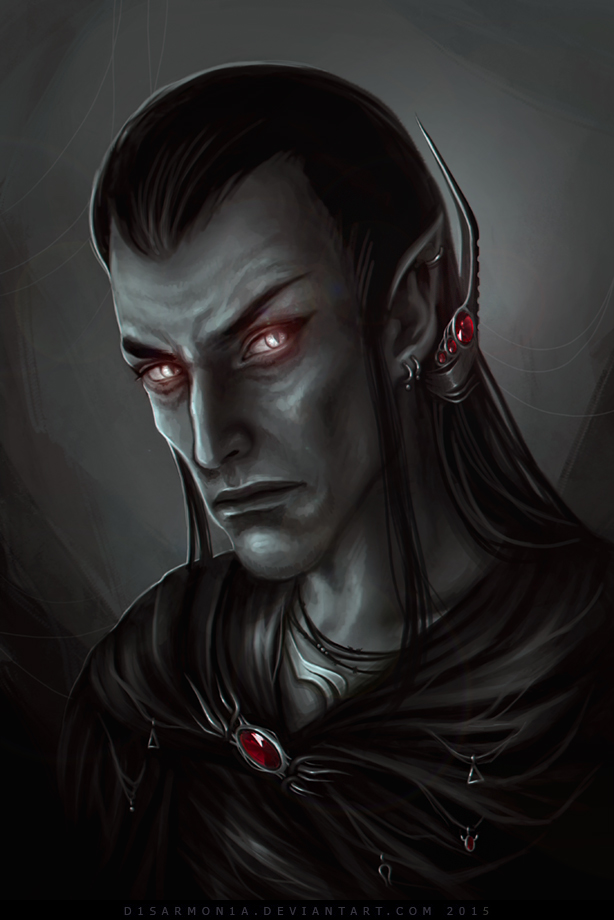
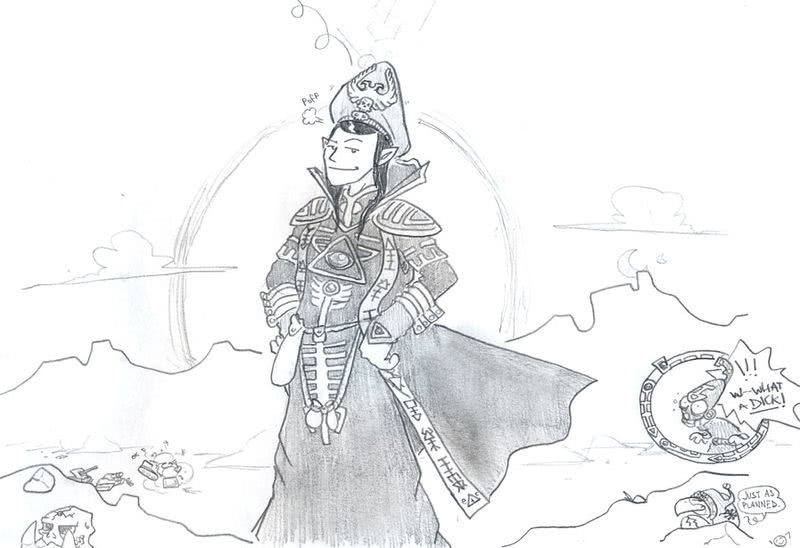
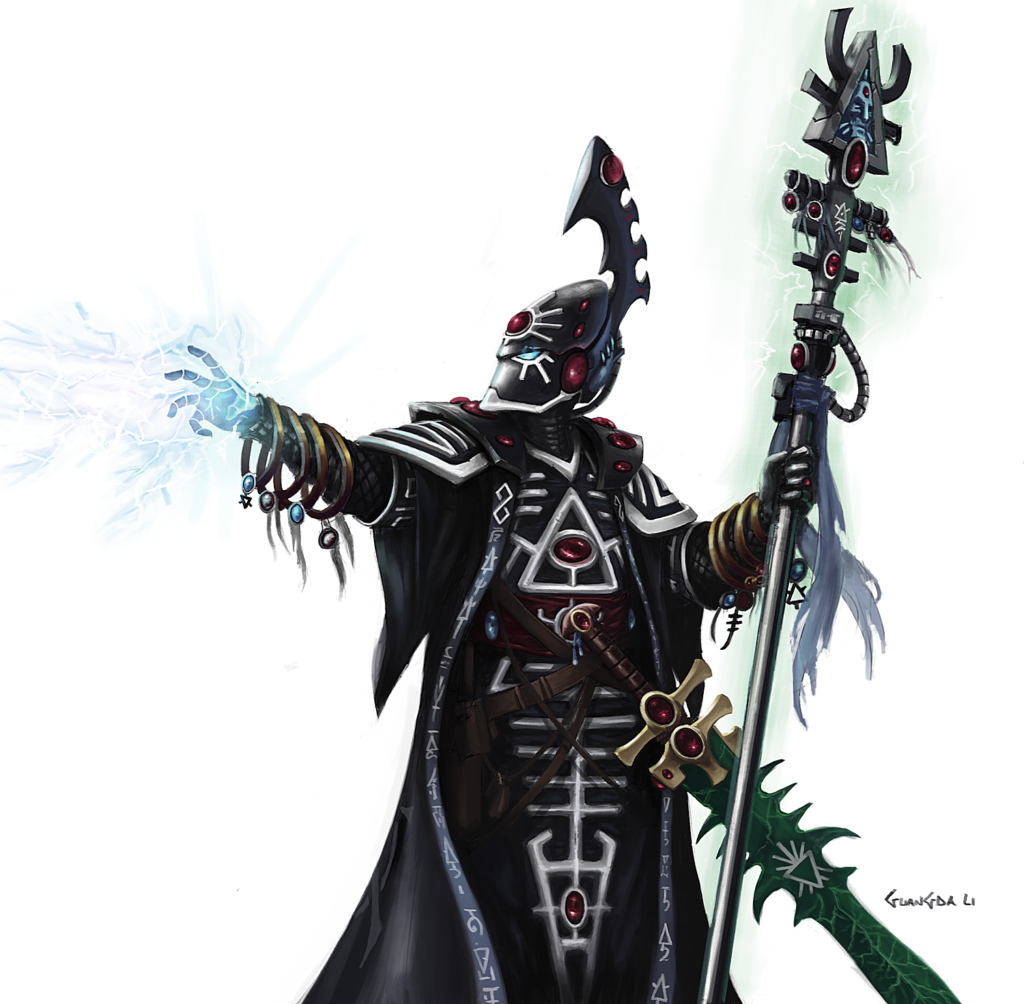
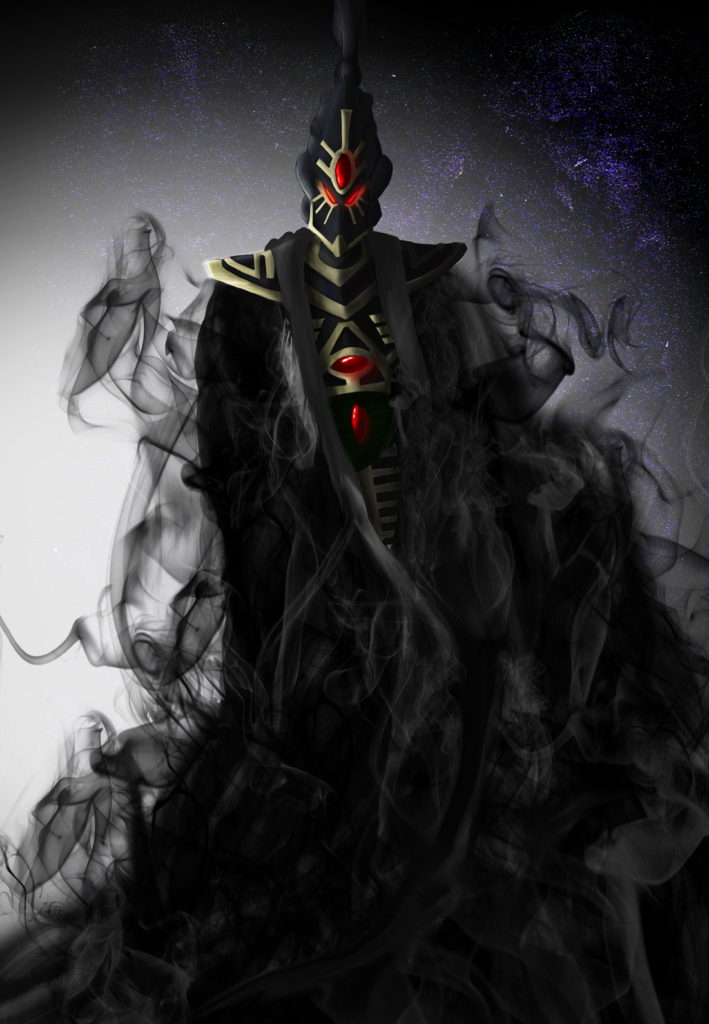

Great read as always! I don’t have the book in front of me to see if he is infantry but if he is he can get that protect bonus for a 2++.
He certainly can be the target of Protect, although most of the time it isn’t needed. But if you really want to tie something down in close combat (like another character), Eldrad can certainly do the job.
For 135 points the farseer skyrunner is much better choice. Same 4T and 6 wounds and the 16″ move and fly alone makes him much better than eldrad even with just 2 casts.
Actualy someone who did fight against primarch should deserve a buff to his legendary underwhelming staff to do at least 2 hits with each atack. He would than sit on 4 atacks instead of 2. With 7″ move he usualy ends in close combat unlike the skyrunner farseer.
Pretty much the best reason to bring Ulthwe.
Alaitoc: so good it’s both vastly more powerful *and* more powerful!
plz gib snarky reply pupper
Alaitoc is fair and balanced because -1s to hit are fake news.
Thanks for the article abusepuppy.
I feel like the decision not to get into the ynnari angle kind of means that you miss some of the power of this model.
When I have seen Eldrad used, it is always been in craftworld agnostic ynnari detachments. In those detachments you can put a warlock or a warlock conclave which, with the +1 to cast stratagem means that you will be getting +2 to cast on all of Eldrads powers. That is magnus-level good!
Those bonuses to cast, plus his ability to reroll one or both the dice really helps get ‘D6 smite off’ and essentially makes everything else cast on a 5+ – Super strong.
Aside from this, I feel like Eldrad sits in a nice niche for some lists which ‘only’ want to cast 3 farseer powers a turn, rather than only two or four. Say you want doom, guide and fortune for your shining spears but not executioner.
The reasons I’m avoiding discussing Ynnari are twofold: first off, it adds a huge layer of complexity to an already complex subject, since now we have to consider his interactions with every other Aeldari model in two other factions. Second, GW has shown that they (perhaps rightfully) have their eye on Ynnari and have radically changed how they work several times this edition already. I would like to have the article hold some lasting value, so until Ynnari get a codex release of their own (and thus get some fixed rules), I’ll hold off on too much commentary there.
With that said, Eldrad is great in a Ynnari detachment, because his main downside (being Ulthwe) becomes largely irrelevant. You often see him in Ynnari lists for that reason.
Yes I agree with the Ynnari comments, however that is a large part of why is he is powerful ‘right now’.
However that then plays into him being part of a supreme command detachment or maybe a mechanised detachement where the -1 doesn’t really matter.
More broadly, you get considerably more freedom with craftworld choices on characters because they don’t really care/need the -1 to hit.
It does create some awkwardness in regards to stratagems (you’re jinx conclave likely needs to be ulthwe and you’ll need another farseer in your main craftworld faction if you want to use forewarned)
So I just reread Eldrad’s entry in the Codex and is his Spirit Link time applied after each cast? Because it seems like he gets a casting bonus each time and so can potentially have up to +2 to cast on his final power? +3 with seer council stratagem?